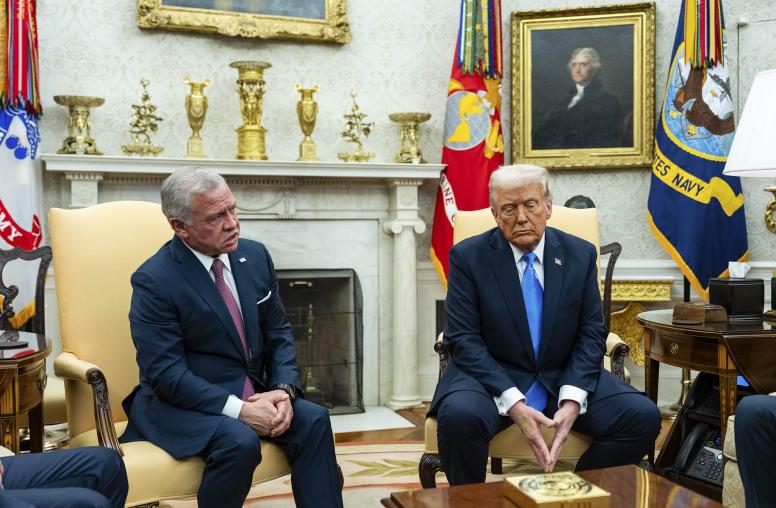Israeli Prime Minister Benjamin Netanyahu’s meeting with U.S. President Donald Trump in Washington tomorrow is likely to produce at least a few initial signs of next steps in a decades-long conflict—and equally long efforts to resolve it. It’s unclear how President Trump will engage on the stalled Israeli-Palestinian peace process, but he has indicated his interest in “making the ultimate deal.” He also recently issued a statement on the unhelpful nature of settlements, and affirmed his commitment to the two-state solution.

Certainly, after decades of effort, initiatives to resolve this conflict engender cynicism. One Israeli analyst I recently met referred to the collective perennial diplomatic efforts as the “rest in peace” process, and a refrain from Palestinians is that diplomacy has been heavy on process, light on peace.
Yet majorities of Israelis and Palestinians still support a two-state solution as the preferred end to the conflict, even while harboring pessimism regarding its prospects. As time passes, this goal becomes more difficult to implement as settlements expand, attitudes harden, political division persists, and mutual mistrust in the existence of a good-faith partner deepens.
But should President Trump take up the challenge, the opportunity still exists. Ultimately the onus is on the Israelis and Palestinians, but in this climate of leadership inertia, and against a backdrop of regional turmoil, there is a role for responsible U.S. engagement. Playing that role sits squarely within U.S. national security interests.
The broader Middle East may be on fire, but those who seek regional stability ignore the Israeli-Palestinian conflict at their peril. The conflict captures the imagination well beyond its borders, and remains an easy rallying cry for violent extremists. This also means that Israelis, Palestinians and many Arab states now share regional security interests. But cooperation among these players on mutual threats will be limited until there are clear signs of a resolution to the Israeli-Palestinian conflict.
The prospect of pushing the parties to meaningful direct negotiations in the near term is dim, and trying is inadvisable. But things can, and should, be done short of that objective. Above all, progress will require a clearly-defined vision for how this conflict ends, an articulated commitment by the Israeli and Palestinian leaderships to a shared goal of a two-state solution, and practical steps on the ground that provide a tangible sense to the Israeli and Palestinian publics that the vision is achievable.
The U.S. cannot effectively go it alone as a third party, but it can lead in corralling our European and Middle Eastern allies around a coordinated package of incentives, disincentives and steps that pave the way. These include easing the humanitarian crisis in Gaza; advancing stronger governance and institutions in the West Bank; improving economic opportunity in East Jerusalem; halting settlement activity; guarding against official provocation and incitement; and strengthening support for civil society initiatives that build trust and prepare the ground for peace.
It’s a tall order, but clear avenues and mechanisms exist, should President Trump decide to take up the charge. Peace inevitably will require process, but to succeed, that process must be implemented with an unambiguous destination, and a set of defined landmarks en route.



